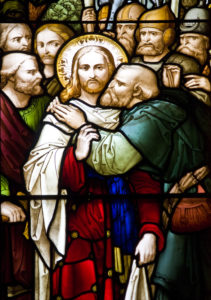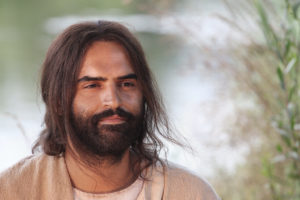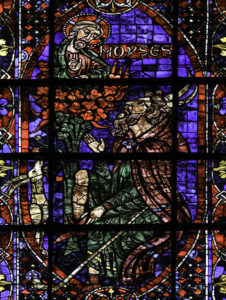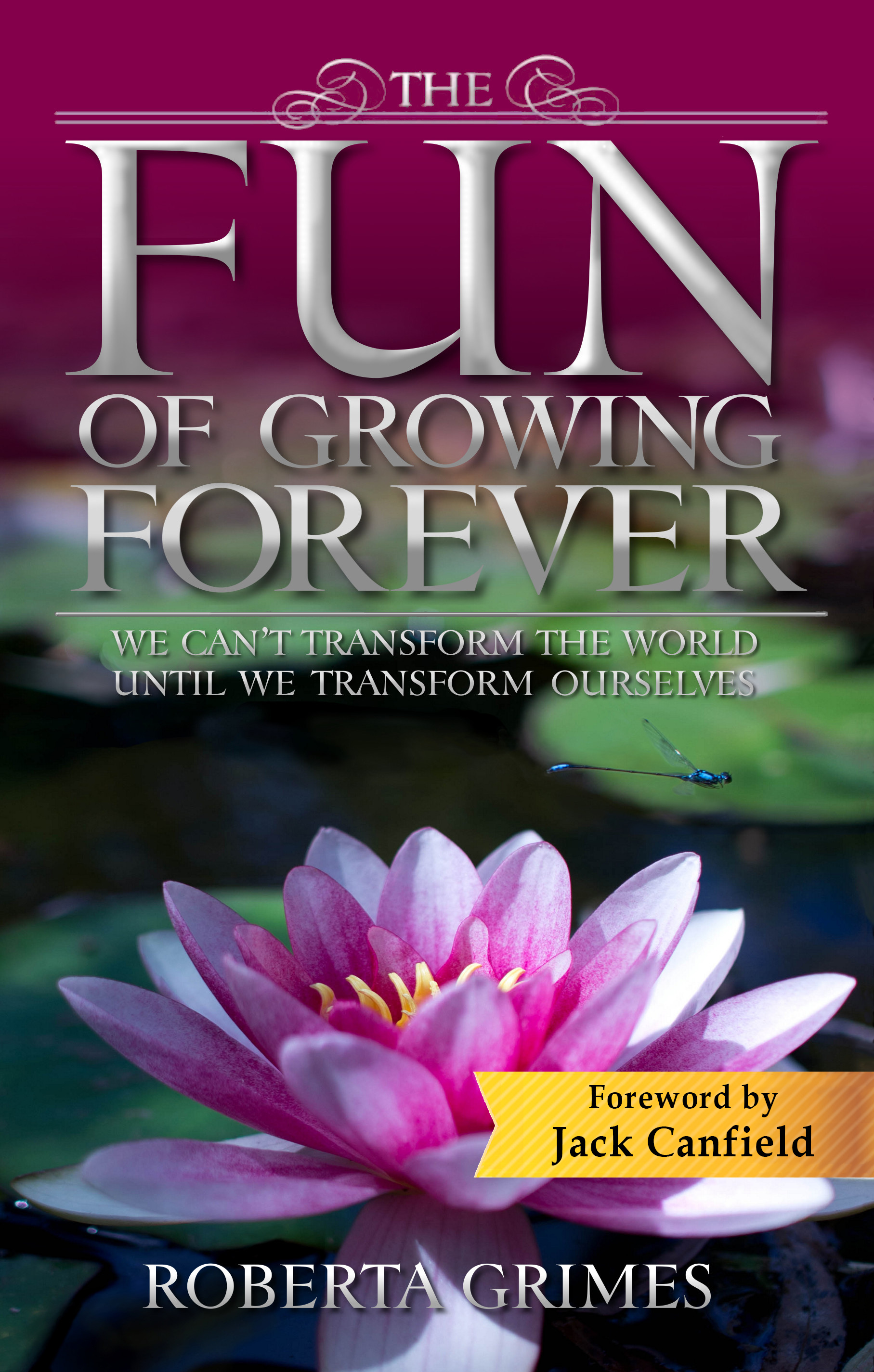Some say the world will end in fire, Some say in ice.
From what I’ve tasted of desire
I hold with those who favor fire.
But if it had to perish twice,
I think I know enough of hate
To say that for destruction ice
Is also great. And would suffice.
– Robert Frost (1874-1963), from “Fire and Ice” (1920)
 If you had been told that the world will end in two hundred years, what would you do? I suppose your answer would largely depend on the credibility of the source; but let’s assume the source was credible. Would you keep it to yourself? Announce it to the world? Devote the rest of your life to trying to keep the end of the world from happening?
If you had been told that the world will end in two hundred years, what would you do? I suppose your answer would largely depend on the credibility of the source; but let’s assume the source was credible. Would you keep it to yourself? Announce it to the world? Devote the rest of your life to trying to keep the end of the world from happening?
Six years ago this coming May I received precisely that announcement from a highly credible source. I have tried ever since that night to do what I could to delay the end of the world, but I acknowledge now that it hasn’t been much. I have, however, had that warning always foremost in my mind, so it amazes me now to realize that I seem not to have shared it with you beyond a couple of glancing mentions. I think I’ve felt embarrassed by the thought of saying something so alarming just on Spirit’s word alone. But, okay. Thomas has asked me now to tell you the story. He says it is something that you need to hear.
 Late in 2014 I had the strong sense that someone in spirit wanted to talk to me. I made an appointment with a well-recommended medium for early in 2015. And after I had a great reunion with my whole extended family at my grandfather’s dairy farm in spirit that overlooks a celestial sea, the medium said that my guides now wanted to have a word with me.
Late in 2014 I had the strong sense that someone in spirit wanted to talk to me. I made an appointment with a well-recommended medium for early in 2015. And after I had a great reunion with my whole extended family at my grandfather’s dairy farm in spirit that overlooks a celestial sea, the medium said that my guides now wanted to have a word with me.
I had lived for more than sixty years with the help of a primary spirit guide that I had met in childhood. He guided me internally, and mainly at night, and he had overseen the channeling of a series of books. The whole relationship was working so well that I had no wish to change it. But although I had no memory of it, apparently for the first time in all our long relationship I had been balking at Thomas’s nighttime guidance. So after the medium had introduced my lesser guides – there were ten, as I recall – I met my beautiful Thomas in person.
I am embarrassed to tell you that my big takeaway from that first face-to-face meeting with him was a groupie’s thrill at having just learned that my primary guide had been Thomas Jefferson in a prior lifetime. I was such a big fan! And apparently I have been his close male friend through seventeen other lifetimes, so he seemed that day to be creeped-out by the fact that I had no memory of our real relationship, and on top of that now I had a schoolgirl crush. I was so star-struck that Thomas said nothing to me. The medium soon ended the session, and Thomas waited for more than a month before he again reached out to us.
 My second medium-assisted meeting with Thomas came on May 16, 2015. It began what has become a lovely daytime relationship with my primary spirit guide, but for quite some time that meeting was a highly traumatic memory.
My second medium-assisted meeting with Thomas came on May 16, 2015. It began what has become a lovely daytime relationship with my primary spirit guide, but for quite some time that meeting was a highly traumatic memory.
- Thomas began it by saying that he wanted me to channel a new book about the teachings of Jesus. He told me he had written such a book toward the end of his Jefferson lifetime, but he wanted me to write it again “for this new day.” I told him how unworthy I was to write anything about Jesus, but he insisted. When I still demurred, he added that a team in spirit had been preparing me to do this work for the past twenty years. I didn’t have the right to turn it down now! He seemed surprisingly agitated. I realized only later that my refusing to do what he had committed me to do, and what Spirit had spent twenty years preparing me to do, must have been a humiliation for him. So then he rolled out his bigger guns.
- Thomas opened a theatrical curtain on a scene of devastation. All was black with drifting smoke, with ruined buildings and some little fires. Here and there were filthy people grubbing in the ground. I was only vaguely seeing it, but the medium rapidly described what she saw. Thomas told us this was how the United States will look in two hundred years. “A religious war . . . small populations . . . we have far fewer people in the world because many have lost the ability to reproduce. And all the food is manufactured. The so-called Christians caused the war to try to force Jesus to come back. We are working to prevent this war! This is a possible future to be prevented.”
- The curtain closed, and then it opened again on a scene of unearthly beauty in diffuse white light. It looked like Level Three of the afterlife, complete with intensely colored trees and grass and gigantic flowers in unearthly shades. I stared, feeling stunned, as the medium gushed about how lovely it all was. Thomas said, “This is two hundred years from now if you will write this book. We will bring the kingdom of God on earth.” I was dumbfounded. I still was sure I wasn’t worthy! But I said, “I’ll try.”
 Thomas and I then began to channel Liberating Jesus. At first it felt like all our other shared literary ventures, with him giving me a table of contents and then starting in on writing the book. He makes me feel so brilliant! No false starts and no need for corrections, just flawless words from flying fingers. But I had a lot going on at the time, and before we had gotten very far into writing Liberating Jesus, almost a month had passed. Then on the afternoon of June 9th the medium we had been using rang me up out of the blue. She told me Thomas had just possessed her body in a Walmart parking lot and said, “Please forgive the speed at which we are dictating, as your soulular self is working directly for the Master now, without benefit of the filters which would slow the transmission. And I hasten to add, you must please of course speak clearly should your physical suffer exhaustion.”
Thomas and I then began to channel Liberating Jesus. At first it felt like all our other shared literary ventures, with him giving me a table of contents and then starting in on writing the book. He makes me feel so brilliant! No false starts and no need for corrections, just flawless words from flying fingers. But I had a lot going on at the time, and before we had gotten very far into writing Liberating Jesus, almost a month had passed. Then on the afternoon of June 9th the medium we had been using rang me up out of the blue. She told me Thomas had just possessed her body in a Walmart parking lot and said, “Please forgive the speed at which we are dictating, as your soulular self is working directly for the Master now, without benefit of the filters which would slow the transmission. And I hasten to add, you must please of course speak clearly should your physical suffer exhaustion.”
We speculated briefly about what that might mean. And I soon learned exactly what it meant! I came bolt-awake at two o’clock the next morning, ran to my computer, and began to channel a much more powerful entity. Thomas makes me feel smart while he does most of the work, but this new Being was so immensely powerful, and He moved so fast, that He could use me as a word-processor. I had no idea what I was writing, and I had no time to read any of it until He abruptly left me once the book was done.
I know this story is unbelievable. My primary spirit guide told me I had to write a modern version of something he had written when he was Thomas Jefferson, but his request was a trick because it was actually Jesus who later showed up and wrote the book? And the book that Jesus wrote has been in print for five years, and still it hasn’t been much noticed?
 Thomas later gave me the backstory. He told me that I entered this lifetime with writing a new version of Jefferson’s lost Jesus manuscript on my to-do list. But then in the eighties, Jesus decided that His effort to revive His Gospel teachings for modern people as A Course in Miracles had produced a product that was too dense and sophisticated for most of those living now to use, so Jesus decided to do for us just a frank restatement of His Gospel words. He put out a call for a “pure channel” – someone who could channel but had not yet been published – and Thomas nominated me. He channeled My Thomas through me to prove to the Lord that I actually could channel, and in the mid-nineties I was selected. I recall a time around then when I became freshly obsessed with figuring out the science of the afterlife. Was that the start of my closer work with Spirit?
Thomas later gave me the backstory. He told me that I entered this lifetime with writing a new version of Jefferson’s lost Jesus manuscript on my to-do list. But then in the eighties, Jesus decided that His effort to revive His Gospel teachings for modern people as A Course in Miracles had produced a product that was too dense and sophisticated for most of those living now to use, so Jesus decided to do for us just a frank restatement of His Gospel words. He put out a call for a “pure channel” – someone who could channel but had not yet been published – and Thomas nominated me. He channeled My Thomas through me to prove to the Lord that I actually could channel, and in the mid-nineties I was selected. I recall a time around then when I became freshly obsessed with figuring out the science of the afterlife. Was that the start of my closer work with Spirit?
Frankly, I wouldn’t believe any of this myself if I had not been there. I still recall some of what it was like having Jesus as a presence in my mind, and I kept telling myself I should pay close attention because this was so extraordinary. But you don’t remember it. Not really. I do recall that He was using my body as if it were an inanimate object that I had kindly lent to Him: He would direct my eyes to something previously written, and I would look at it but it would seem fine to me so I would try to move on. He would direct my eyes up again to that word or phrase that He didn’t like, and I would try some different phrasings. I would know I had fixed the problem when He moved my attention rapidly back toward finishing our current leading sentence. I remember hearing what must have been His thoughts as whispers in My mind. The only times He spoke 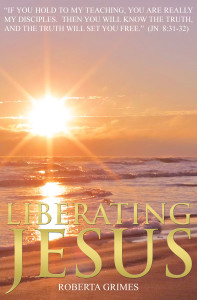 to me were when I had some thought with which He disagreed; and then He was short, sharp, all-business. But as days wore on, He seemed to relax a bit and let me hear what He was thinking. It didn’t seem to be aimed at me, but rather He was addressing the world. He would think things like, “If you love Me, then listen to Me!” And my heart would break for Him.
to me were when I had some thought with which He disagreed; and then He was short, sharp, all-business. But as days wore on, He seemed to relax a bit and let me hear what He was thinking. It didn’t seem to be aimed at me, but rather He was addressing the world. He would think things like, “If you love Me, then listen to Me!” And my heart would break for Him.
What Thomas wants us all to know is that Jesus will never return in an End Times war. The Book of Revelation is a random piece of revenge literature that had been circulated in a time of great persecution, and it was added to the Bible a full three centuries after the Lord’s death. But Thomas wants us to know that the danger is real that misguided Christians living in a more desperate near-future time might see the Book of Revelation as a how-to guide and create an Apocalypse all on their own in a misbegotten attempt to summon the Lord.
Thomas warns us now that rather than summoning Jesus, the religionists’ attempt to start an end-times war risks bringing about the end of the world. And what alarms me now is that the decline in fertility and birth rates that Thomas prophesied six years ago already is beginning to happen! We cannot know the future. But we have been warned. There are many ways the world could end, but to know in advance that its present most likely ending is less than two hundred years away and will happen if we  refuse to heed Spirit’s warning is a flat-out clarion call! Thomas says the hour is late, but if we will act now it still is not too late. All that Jesus ever has asked is that we listen to Him! And it is time for us to listen now. The Lord’s Way beckons….
refuse to heed Spirit’s warning is a flat-out clarion call! Thomas says the hour is late, but if we will act now it still is not too late. All that Jesus ever has asked is that we listen to Him! And it is time for us to listen now. The Lord’s Way beckons….
Nature’s first green is gold, Her hardest hue to hold.
Her early leaf’s a flower; But only so an hour.
Then leaf subsides to leaf. So Eden sank to grief,
So dawn goes down to day. Nothing gold can stay.
– Robert Frost (1874-1963), from “Nothing Gold Can Stay” (1923)
(Postscript for those who think Thomas’s Apocalyptic warning here is excessively alarmist. Apparently his prediction of a plague of infertility is going to be right on the money! An article published five days after this one predicts that a profusion of hormone-disrupting chemicals will drop human sperm counts to zero by the second half of this century. No wonder the earth’s population will be dramatically reduced within two hundred years!)
Forest on fire photo credit: franzisko hauser <a href=”http://www.flickr.com/photos/125814940@N06/49361418476″>The Forests are burning</a> via <a href=”http://photopin.com”>photopin</a> <a href=”https://creativecommons.org/licenses/by-nc-nd/2.0/”>(license)</a>
Tropical fire photo credit: EU Civil Protection and Humanitarian Aid <a href=”http://www.flickr.com/photos/69583224@N05/50013632122″>Throwback: EU’s response to forest fires in Bolivia</a> via <a href=”http://photopin.com”>photopin</a> <a href=”https://creativecommons.org/licenses/by-nc-nd/2.0/”>(license)</a>
Gloomy coast photo credit: Rennett Stowe <a href=”http://www.flickr.com/photos/10393601@N08/35270419294”>Coastal Environs</a> via <a href=”http://photopin.com”>photopin</a> <a href=”https://creativecommons.org/licenses/by/2.0/”>(license)</a>
Desert gloom photo credit: Rennett Stowe <a href=”http://www.flickr.com/photos/10393601@N08/33623057468”>Daylight Refraction</a> via <a href=”http://photopin.com”>photopin</a> <a href=”https://creativecommons.org/licenses/by/2.0/”>(license)</a>
Dark cathedral ruins photo credit: angelobrathot <a href=”http://www.flickr.com/photos/147755034@N05/50110402698”>au bout de l’Europe “on explore du 14-07-20”</a> via <a href=”http://photopin.com”>photopin</a> <ahref=”https://creativecommons.org/licenses/by-nc-sa/2.0/”>(license)</a>



















